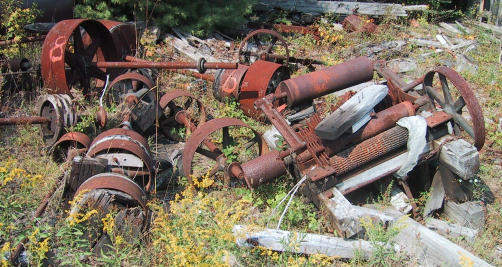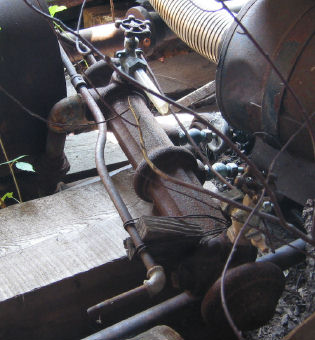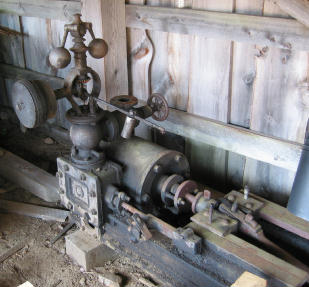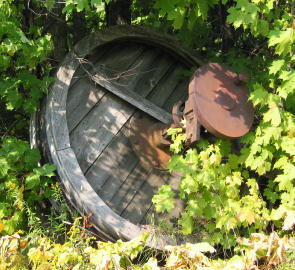Whats left of the Asam Sawmill
Some years ago, I wrote up a page about the Asam brothers steam powered
sawmill when I had last seen it in operation, in 1987. Somebody
familiar with the sawmill e-mailed me about it. Apparently, the
Sault Star newspaper had run an article about the 'preservation' effort
that had been done on the sawmill. Apparently, the intention had
been to take it all apart, and number and label everything , so that it
could eventually be put back together in some sort of museum setting.
However, this effort was carried out in such a way that it did not
further the preservation of the mill. While the mill was in fact
dismantled, the parts were subsequently just threwn in a messy pile
outdoors and left to the elements.
The person who e-mailed me, Tara Cowder, was also kind enough to e-mail
directions on where the mill is, and how to find it. (see bottom of page).
Last September 2003, I went there to check out what was left of it.
Here's pictures of what I found.
These pictures are primarily interesting when viewed next to my Writeup of
the mill in operation

|
This is roughly how the
pieces of the sawmill are 'organized'. The pulleys and shafts
were all scattered on the ground, all rusting. The gadget on the
right was the rip saw, with automatic feed.
|

|
This is the boiler. Interesting how its all made of
riveted together steel plates. I have seen discarded
boilers that were much more modern than this one.
|
|
| 
|
This doohickey was a "sight glass" for measuring the water level in the
boiler while in operation. The broken glass tube was used to see
the water level, while the cast iron thing next to it was a "dashpot"
to help equalize temperatures to make the readings more accurate,
or something like that.
|
|
| 
|
This was the carriage for moving the logs past the saw blade.
|

|
The cylinder, the heart of the steam engine, fortunately was
kept under a roof, so it had been spared from the elements.
Perhaps it will still some day grace a museum.
|

|
The main flywheel. The
iron part towards the top right is the actual crank. The flywheel
itself is mostly made of wood, but massively so. The pulley went
around the outside of this flywheel, to a pulley perhaps a quarter of
this size driving the saw blade. The flywheel went at maybe
around 120 RPM. Slow enough that you could easily follow the
piston going back and forth with your eyes.
|
Directions to the sawmill. Note that this appears to be private
land. There is another sawmill just across from where the remains
are.
The mill is located on Landslide Road,
Sault Ste. Marie,
Ontario just north of Hiawatha Lodge on Landslide and immediately north
of the
small cemetery also on Landslide. Just past the cemetery you will
see a yellow
steel pull gate. Pull in there. Walk the road about 300
hundred yards. It will
be on the right just past the buildings
If, like me, you like to play with a GPS, its at these coordinates:
N46°35.4222'
W084°17.0634'
Go to My ruins page








![]()